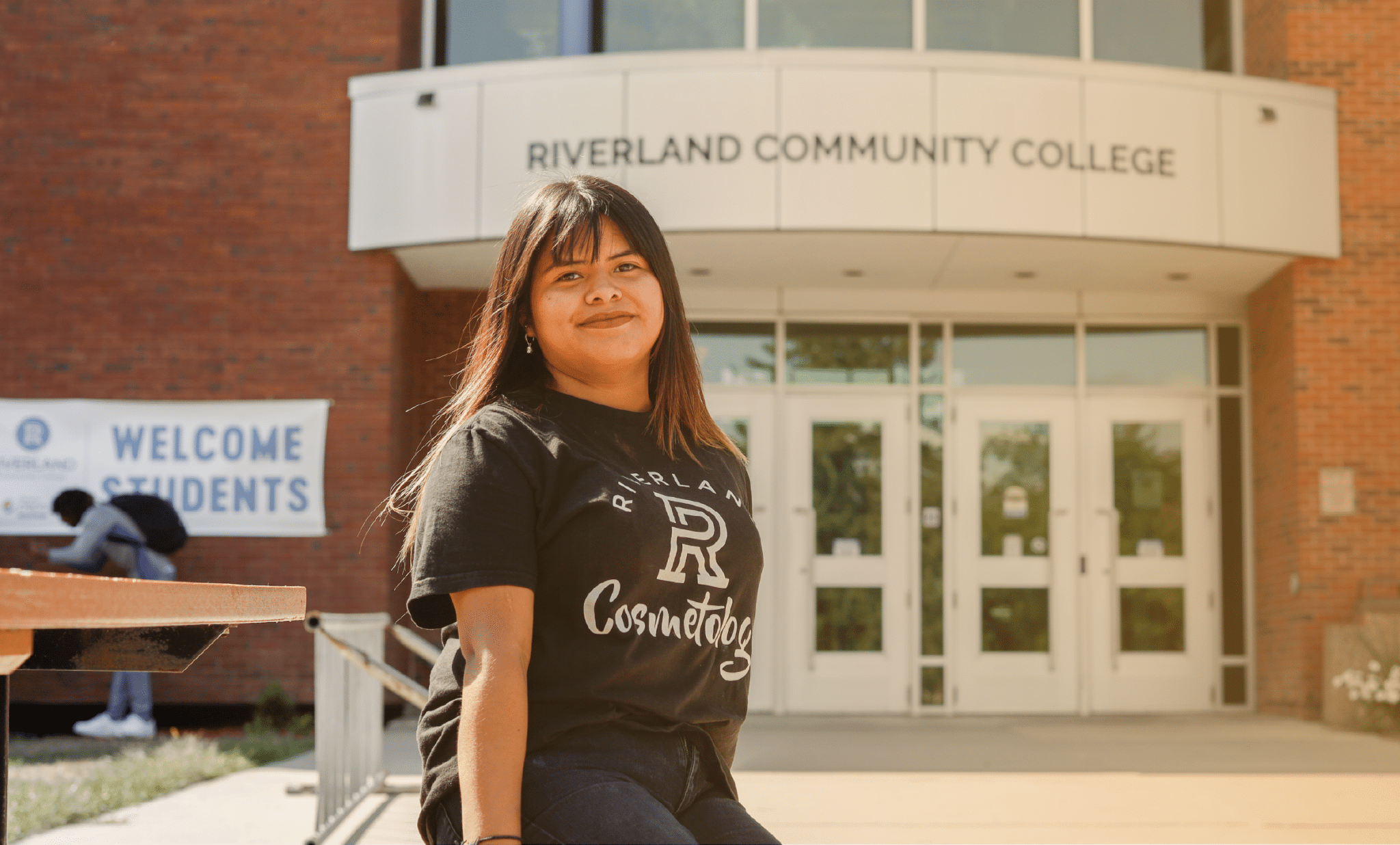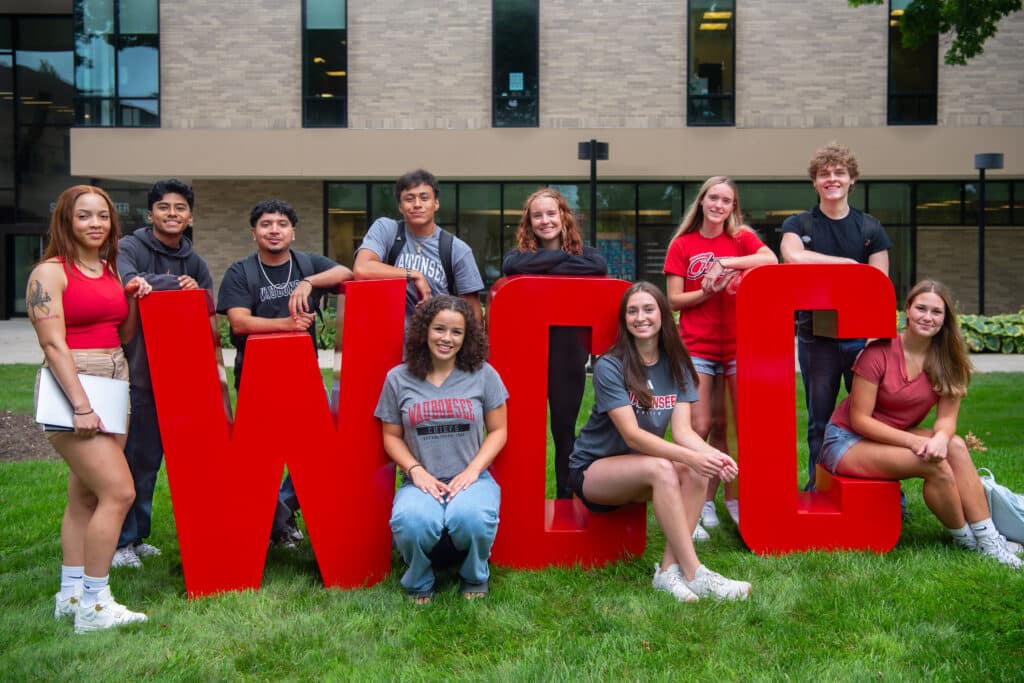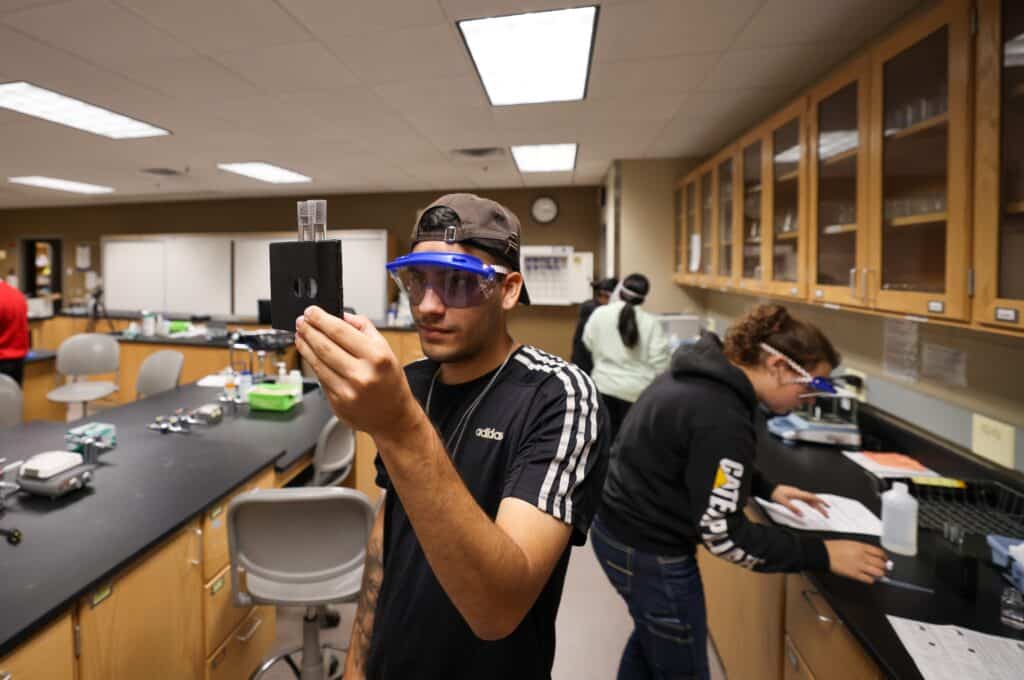In 2024, two Hispanic-Serving Institutions (HSIs) and one emerging HSI joined the ATD Network. Phoenix College serves a majority-Latinx student body in Arizona’s capital, Waubonsee Community College serves a diverse community in the suburbs of Chicago, and Riverland Community College is meeting the needs of a fast-changing population in rural Minnesota.
We spoke with leaders from all three colleges about what the HSI designation means for their institutional identity, the steps they’re taking to advance Latinx student success, and how they hope to continue helping Latinx learners thrive in the future.
Phoenix College
Phoenix College (PC) has been an HSI since 2008 — more than half the students it currently serves identify as Hispanic or Latinx. Staff say that the designation has affected the institution’s culture, encouraging the college to identify and and address equity gaps for all students.
“We serve a tremendously diverse group of students,” says Dr. Pam Duty, chair of the reading English department and president of the faculty senate. Efforts to meet the needs of its largest group of student have also had “downstream effects” on all other racial and ethnic groups, improving outcomes for everyone.
Being an HSI has practical effects as well: The designation comes with eligibility for certain federal funding, such as Title V grants that have supported faculty development, curriculum improvements, tutoring, and other support services. The college has also received grant funds from the National Science Foundation and the Arizona Public Service Foundation to support scholarships, free laptops for students, and innovative programs focused on advancing Latinx students in the STEM field.
In 2023, Phoenix College received the Seal of Excelencia, a national certification established by Excelencia in Education for institutions that strive to intentionally serve Latinx students. Applying for the seal was a multiyear process, one which encouraged college leaders to reflect on how every aspect of their work affected Latinx student success, from course curricula to Spanish-language marketing that attracts new students.
In particular, PC has been focused on recruiting and retaining faculty and staff who reflect the diversity of the student population. “I’m an alum here,” says Adrianna Coronel, interim vice president of academic affairs. “It was important to me as a student, especially a first-generation student, to see faculty and staff … that look like me, that know me and my culture.”
Coronel says that she sees PC’s upcoming work with ATD as an evolution of the work that the college is already undertaking, both as an HSI and as a Seal of Excelencia institution. And Dr. Duty, speaking to PC’s existing culture of collaboration and intentional focus on equity, looks forward to opportunities for further collaboration. “I think it’s going to be transformative for the college,” she says.
Photo courtesy of Phoenix College
Waubonsee Community College
Waubonsee Community College (WCC) has four campuses in and around Aurora, Illinois — about an hour’s drive west of Chicago. Just under one-third of its students are Hispanic or Latinx, but the designation is “a symbol of pride and responsibility” as well as accountability, according to vice president for talent and culture and chief diversity officer Dr. Anthony Ramos.
“It signifies a profound commitment for us to support and uplift our Latinx students,” says Jessica Moreno, dean for academic support at WCC.
Like all community colleges, WCC is accountable not only to its students but also to the community it serves. Moreno says it’s important that the Latinx community in its service area — including Aurora, whose population is more than 40% Latinx — feels valued and included in institutional decision-making. To Moreno, this means forging strong partnerships with local organizations, using community resources, and fostering a campus culture that respects and celebrates the Latinx community.
WCC’s Colegio De Empoderamiento (College of Empowerment) is an example of all three principles in action: A partnership between the college’s Latinx Resource Center and the Girl Scouts of Northern Illinois, the program offers Spanish-language courses designed to help people navigate higher education and gain a clear understanding of the services available to them.
Dr. Ramos, who is also a new ATD coach, says that community is central to the work WCC plans to undertake during the next three years of partnership with ATD. Whether by offering relevant programs that lead to family-sustaining wages and careers or by attracting business and industry to the area to support greater economic and workforce development, he wants to ensure that the college continues to help the community thrive. As he puts it, WCC “can be a partner in improving lives in our area.”
Photo courtesy of Waubonsee Community College
Riverland Community College
Riverland Community College, a member of the Minnesota State system, serves students across three campuses in southeastern Minnesota and online. Riverland joined the ATD Network as part of the second Accelerating Equitable Outcomes cohort, a group of seven rural colleges focused on transforming student experiences and outcomes. Earlier this year the college was the first Minnesota college to be named an Emerging HSI by the Hispanic Association of Colleges and Universities (HACU), a designation that signals the college is on the path to meeting or surpassing the threshold of 25% Latinx students based on current K–12 enrollment.
Kenneth A. Reid, vice president of strategic enrollment and equity, said that the designation has sharpened Riverland’s existing equity efforts. The college has already been tackling opportunity gaps in alignment with the Minnesota State system’s Equity 2030 objective, but Riverland is also placing a more intentional emphasis on supporting Latinx students.
This includes a new effort to ensure that future “frontline” staff members — people hired for student-facing positions in advising, financial aid, advocacy services, etc. — are bilingual. “That way, we can make sure we meet the needs of not only the students but also their families,” Reid says.
Heather Conley, vice president of academics and innovation, says that workforce development is one priority for the college. Riverland wants to prepare its students for careers that pay a sustainable living wage — which also attracts new employers to the area.
But the college is responding to more than just changing workforce demands: The area Riverland serves, including the town of Austin, is becoming more racially and ethnically diverse. Austin Public Schools have recently become majority-minority, meaning more than half of enrolled students are from racially and ethnically diverse backgrounds.
Riverland is committed to meeting the changing needs of its community and providing a welcoming space for all learners. Conley hopes Riverland can continue to be a driver of vitality for the community. “In order to be a good stakeholder,” she says, “we have to ensure that our students are succeeding and that they’re ready for the next step.”
Photo courtesy of Riverland Community College
The HSI designation reflects more than demographics: It also acknowledges the work and commitment of these institutions to equitably serve their students and to close equity gaps in access, retention, and success for Latinx communities.
As Heather Conley put it, “The active verb in HSI is ‘serving.’”






